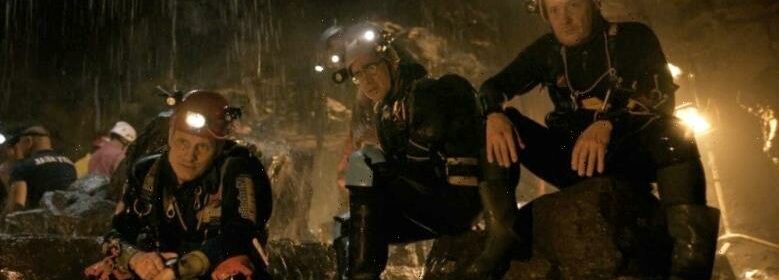Thirteen Lives Score Gave the Tham Luang Cave Its Own Sound

Ron Howard’s “Thirteen Lives” recounts the 2018 Tham Luang cave rescue operation, where 12 children and their coach were trapped in Thailand’s Tham Luang Nang Non cave for 18 days. While working on the score for the film, Benjamin Wallfisch wanted to give the cave where the boys were trapped its own unique sound and character to bring it to life for the audience.
“It was about embracing the place and tuning in with the spirituality of the culture,” Wallfisch told IndieWire Crafts and Animation Editor Bill Desowitz at the Consider This FYC Brunch. “The way in was actually finding a voice for the cave itself. There was a song from the Chiang Rai region itself and our musicologist did a ton of research for us into finding songs from the region. That was the starting point, finding something that really told the story of the place.
Wallfisch was joined by editor James D. Wilcox and supervising sound editors Oliver Tarney and Rachel Tate to discuss “Thirteen Lives” at the Consider This event. During their interviews, the four discussed working with Howard and how they attempted to recreate the 2018 rescue operation, which received global attention after they managed to save all 12 boys and their coach from harm.
Wilcox said he was slightly intimidated when he signed on to edit the film, as he had never worked on a film that features foreign languages, and much of the film features characters speaking in Thai. Once he jumped on, however, he found that the most challenging part of the process was editing the underwater scenes, as he had to juggle footage of stunt doubles with footage of the actors. It was only when the divers who saved the boys were introduced into the story that Wilcox found that the diving scenes came together.
“That’s when it all shifted, that’s when the underwater storytelling really came together,” Wilcox said. “I was sending cuts back and forth back to Ron saying, ‘This can’t be diving for diving’s sake. There are real specifics to understanding what’s happening.’ You don’t have any dialogue to hang your hat on, so you gotta know what’s happening underwater.”
In terms of building the sound of the film, Tarney and Tate said their goal was to establish different types of soundscapes for the aboveground sections of the film, and inside the cave, with a major focus on realistically capturing underwater sounds.
“The water sound design, if you listen to it, it’s very rolled off, it’s very diverged, so you’re tricking the audience into not knowing where sounds are coming from,” Tarney said.
In the underwater scenes, the actors usually wear goggles that obscure their faces. With that in mind, Tarney said the sound design for their breathing was important for keeping the audience connected to the characters and in the scene.
“All that connection you get in a scene through their face you don’t get, so we need to tell you how they’re feeling, how tense it is, how calm they are,” Tarney said. “The professional divers, you hear it, it’s very muted. You hear the Thai Navy SEALS dive, they use a lot more air. So this really colors the scene for you.”
“Thirteen Lives” is currently streaming on Amazon Prime Video.
Source: Read Full Article